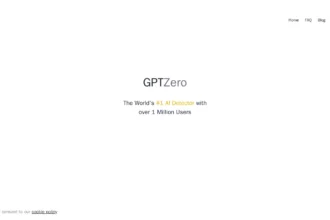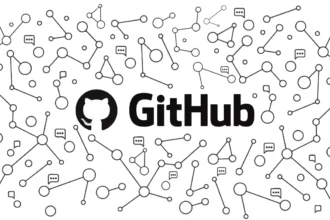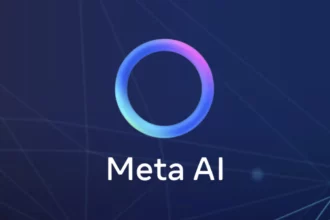Welcome to our blog post on XGBoost learning rates! If you’re a data enthusiast or a machine learning aficionado, you’ve likely come across the term “XGBoost” and wondered about the role of learning rates in this powerful algorithm. Well, you’re in the right place! In this article, we’ll dive deep into the fascinating world of XGBoost learning rates and explore their importance, optimal determination, and the effects of both high and low rates. Plus, we’ll compare learning rates in LightGBM and XGBoost, giving you a comprehensive understanding of this crucial parameter. So, grab your favorite beverage, sit back, and let’s unravel the mysteries of XGBoost learning rates together!
Table of Contents
ToggleUnderstanding Xgb Learning Rate
The learning rate in XGBoost, frequently termed as the shrinkage factor, plays a pivotal role in the journey of model refinement. Imagine a sculptor, chip by chip, uncovering the statue within the marble block. Each stroke is measured and precise. Similarly, the learning rate dictates the precision of each iteration as the algorithm carves out the final model. Unlike the aggressive leaps that could overshoot the mark, the learning rate in XGBoost ensures methodical progress towards reducing errors.
Often referred to as eta in XGBoost’s documentation, the learning rate is likened to the nuanced control of an artist’s brushstroke—too heavy, and the canvas becomes muddied; too light, and the picture lacks depth. It essentially calibrates the contribution of each new estimator to the ensemble’s growing wisdom.
| Concept | Description |
|---|---|
| Learning Rate in XGBoost (eta) | Determines the contribution of each tree to the final outcome, acting as a step weight in the ensemble’s predictions. |
| Impact on Model Accuracy | A proper learning rate can lead to high accuracy, with XGBoost achieving scores such as 91.67%. |
| Learning Rate vs. ETA | Both terms refer to how quickly the model adapts, with eta being the specific term used in XGBoost. |
| Learning Rate in Boosting | Controls the magnitude of model updates, critical to the performance of gradient boosting decision trees. |
Let’s delve into the effects of the learning rate. A high learning rate may lead to a hasty model, prone to missing subtle patterns—akin to a rushed artist missing the delicate shadows needed for depth. Conversely, a low learning rate nurtures a patient model, one that learns slowly, capturing nuances but requiring more time—imagine a painter layering glaze upon glaze to achieve the perfect hue.
Understanding this balance is essential. Too high, and the model risks the hubris of overfitting; too low, and it may never reach its potential, mired in the mists of underfitting. The learning rate is thus a beacon, guiding the XGBoost algorithm on a path between the Scylla of complexity and the Charybdis of simplicity.
In the realm of gradient boosting, the learning rate’s role is further emphasized as it interplays with the number of estimators. A model with a lower learning rate will often require a greater number of trees, or n_estimators, to achieve comparable performance to a model with a higher learning rate. This delicate dance between learning rate and n_estimators is a testament to the art and science of machine learning.
As we sail forward, it is crucial to remember that the learning rate is not a solitary traveler in the journey of model optimization. It is part of an ensemble, where each parameter plays its part, and harmony between them leads to a symphony of accuracy and efficiency.
With these insights, we shall venture into the nuances of determining the optimal learning rate, a quest filled with both challenges and triumphs.
The Importance of Learning Rate in XGBoost
In the grand tapestry of machine learning, the learning rate in algorithms like XGBoost is akin to the delicate brushstrokes of an artist—fine-tuning the masterpiece with each iteration. As a pivotal parameter, it commands the pace at which the model learns from the data, a dance between speed and accuracy that XGBoost performs with remarkable agility. Achieving a stellar accuracy score of up to 91.67%, XGBoost has demonstrated its prowess across a spectrum of machine learning challenges, thanks in no small part to its finely optimized learning rate.
Imagine for a moment that the learning rate is the throttle of a race car—eta in the XGBoost lexicon. Push it too hard, and you risk spiraling out of control, missing the nuanced twists and turns of the data. Conversely, a gentle touch may not propel you to the finish line of model convergence swiftly enough, leaving valuable insights in the rearview mirror. It’s this delicate balance that defines the essence of the learning rate’s importance in the realm of gradient boosting decision trees.
As we peel back the layers of this hyperparameter, we uncover its role in tempering the contribution of each new estimator to the ensemble’s predictions. A lower learning rate, or eta, signifies a cautious approach—each decision tree adds a whisper of insight, ensuring the model doesn’t leap to conclusions but rather builds its knowledge gradually. This methodical buildup often necessitates a larger number of trees, akin to weaving a rich tapestry strand by strand, to achieve the same level of error reduction that a higher learning rate could attain more swiftly.
Balancing the learning rate is not just a mathematical exercise but an art form where machine learning practitioners, like skilled composers, must harmonize it with other hyperparameters to create a symphony of predictive accuracy. The interplay between the learning rate and the number of estimators is a duet that, when performed correctly, can lead to a crescendo of model performance.
As we journey through the intricacies of XGBoost, the learning rate stands out as a beacon, guiding the ensemble to navigate the complexities of data. It’s a testament to the sophistication of this algorithm that such a seemingly simple parameter can wield such influence over the outcome of a model’s predictions. To wield this tool effectively is to master the subtle art of machine learning optimization—a challenge that is as rewarding as it is essential.
With the stage now set, let us delve deeper into the intricacies of this critical hyperparameter, exploring the nuances that make it a cornerstone of XGBoost’s success.
Determining the Optimal Learning Rate
In the quest to harness the predictive power of XGBoost, the learning rate emerges as a pivotal tuning knob, one that must be turned with deliberate precision. Embarking on this quest is akin to seeking the perfect tempo for a symphony—the right learning rate sets the rhythm for the algorithm to learn harmoniously from the data. While the range of possible values might stretch wide—from the minute 10^-6 to the more robust 1.0—the sweet spot often lies in the more modest territory.
The traditional default values, 0.1 or 0.01, have long been the maestros’ starting points, akin to the confident first notes struck in a musical masterpiece. These values, while not magical in themselves, provide a familiar baseline from which the fine-tuning begins. Yet, the art of determining an optimal learning rate for XGBoost is not found in these default values alone but through a meticulous process of exploration and adaptation.
Picture a gardener cultivating a rare bloom, adjusting the soil’s nutrients with care. Similarly, the data scientist adjusts the learning rate, seeking that fertile level where the model flourishes. To embark on this journey, one might consider initial forays with values such as 0.0015, 0.002, or 0.0025. These starting points are not arbitrary but are chosen with the wisdom of experience, suggesting a gentle approach where the model can incrementally absorb and learn from the data without the risk of overshooting the mark.
Imagine the learning rate as a guide, leading the model through the dense forest of data. Too swift a pace, and the model may stumble, missing the subtle patterns that lie hidden beneath the underbrush. Too slow, and the journey becomes a prolonged endeavor, with the risk of never reaching the destination. The art of determining the optimal learning rate for XGBoost lies in striking that delicate balance—setting a pace that is neither too hurried nor too sluggish, allowing the model to navigate the terrain with the grace of a seasoned traveler.
It is this careful calibration of the learning rate that can spell the difference between a model that merely performs and one that excels, between an ensemble that is merely adequate and one that sings with accuracy. Through trial and error, guided by intuition honed by experience, the optimal learning rate is uncovered, a beacon that illuminates the path to machine learning excellence.
Effects of High and Low Learning Rates
In the intricate dance of training an XGBoost model, the learning rate is akin to the precise footwork of a masterful dancer. It’s not simply a number you tweak; it’s the choreography that leads to a performance of either harmonious elegance or disarray. When the learning rate is set too ambitously high, you may find your model tripping over itself, with its convergence becoming erratic and unpredictable. The training loss may leap like an untamed animal, refusing to settle down, or worse, it may find comfort in the deceptive trap of a local minimum, far from the true potential of your model.
Conversely, when a learning rate is excessively timid—think of a value smaller than 0.001—the model moves with excessive caution. It’s the slow, tentative step of a novice, extending the journey unnecessarily without promise of a better destination. Such a rate might lead to a painstakingly slow convergence, without the reward of improved accuracy. This is where the art of balance comes into play, requiring you to find that sweet spot—a rate that is neither a reckless sprint nor a hesitant crawl.
Imagine the learning rate as the speed at which an artist paints a masterpiece. Too rapid, and the brushstrokes become haphazard, ruining the canvas. Too slow, and the paint dries before the work is complete, leaving the art forever unfinished. The artist, much like the XGBoost algorithm, must find a rhythm that embodies precision and timely execution.
The optimal rate is a symphony of efficiency and accuracy, where each iteration of the model’s training is a note played at just the right moment, contributing to the crescendo of a fully trained predictive model. This harmony is what we aim for when we adjust the learning rate, seeking the tempo that leads to the most accurate predictions in the most reasonable amount of time.
While some may argue that a higher learning rate could lead to faster learning, this is a siren’s call that can lure the model onto the rocks of suboptimal performance. It is essential to resist the temptation of speed without direction, for the path of machine learning is strewn with complexities that demand a measured approach. On this journey, we must be guided by the knowledge that a higher learning rate is not inherently better, and that a smaller learning rate, while slower, may capture the nuances of the data more effectively, leading to a more robust model.
It is through this understanding of the effects of high and low learning rates that we can steer the XGBoost algorithm towards its full potential, achieving a balance that allows it to learn with both speed and grace. The learning rate, therefore, is not just a parameter—it is the heartbeat of the model, pulsing at the rate that brings the data to life.
Learning Rate in LightGBM vs. XGBoost
Embarking on the journey of model building with gradient boosting frameworks like XGBoost and LightGBM is akin to setting sail across the vast oceans of data. The learning rate here acts as the rudder, guiding your model through the waves of information, preventing it from veering off course. In XGBoost, the learning rate—often referred to as eta—determines the impact of each new tree on the final outcome, much like a captain adjusting the sails to harness the wind’s power without capsizing the ship.
LightGBM, another contender in the boosting race, implements the learning rate with a slightly different nuance. Here, it’s the normalization weight for dropped trees, ensuring that each contributes proportionally, maintaining the fleet’s formation. This subtle distinction highlights the unique engineering underpinning LightGBM, where it focuses on optimizing for speed and efficiency, akin to a swift clipper slicing through the sea.
The interplay between the learning rates of these two algorithms is a dance of precision and balance. While the core concept remains to control the model’s learning pace, the implementation varies, reflecting the philosophical differences in their approach to conquering the prediction horizon. XGBoost is methodical, building strength upon strength, while LightGBM is agile, quick to pivot and adjust.
As we navigate through the complexities of model tuning, understanding the distinct roles that learning rates play in LightGBM and XGBoost becomes a beacon for machine learning practitioners. It’s not merely about setting a value; it’s about crafting the rhythm at which your model learns from data, ensuring each step is taken with intention and purpose.
Ultimately, while the learning rate in both frameworks is a testament to the art of iterative refinement, the essence of its influence remains the same—a tool to calibrate the model’s responsiveness, allowing it to learn from the past yet remain vigilant to the subtleties of new data. It is in mastering this tool that one can steer these powerful algorithms to their destination: predictive accuracy.
With a keen understanding of the distinctive qualities that the learning rate imparts to each algorithm, we edge closer to harnessing their full potential. The learning rate isn’t just a parameter; it’s the pulse of the algorithm, the heartbeat that keeps the ensemble of trees in sync, marching towards the ultimate goal of predictive precision.
Q: What is the learning rate in XGBoost?
A: The learning rate in XGBoost is the shrinkage applied at each step of the model. It determines the weight of each step made. For example, a learning rate of 1.00 means the step weight is 1.00, while a learning rate of 0.25 means the step weight is 0.25.
Q: What is the accuracy of XGBoost?
A: XGBoost achieves a very high accuracy score of 91.67%.
Q: What is the learning rate in LightGBM?
A: The learning rate in LightGBM is one of the most important parameters. However, the specific value or details about it are not provided in the given facts.
Q: How do you choose the learning rate in gradient descent?
A: The learning rate in gradient descent is a hyper-parameter that needs to be experimented with. Commonly, values like 0.1, 0.01, or 0.001 are used. It is important to choose a value that is not too large to avoid skipping the minimum point and causing optimization failure.





